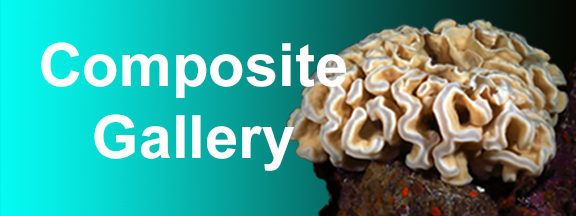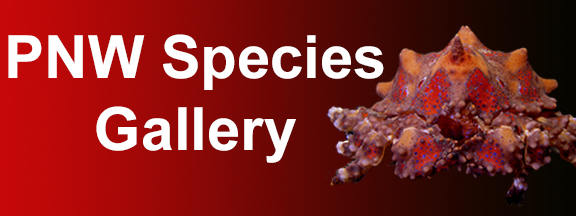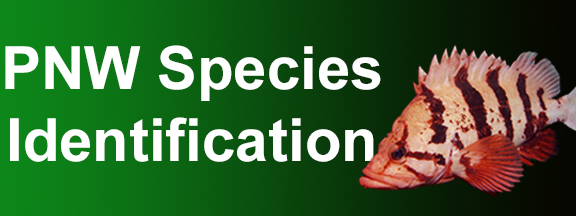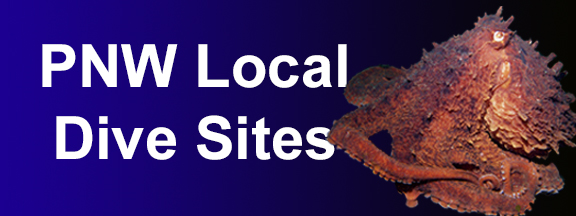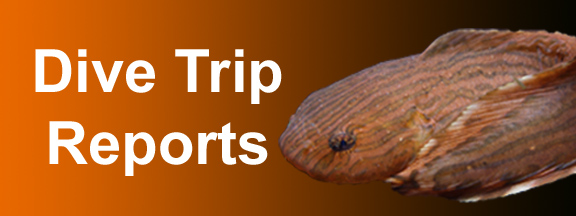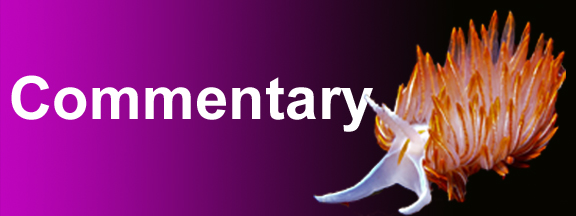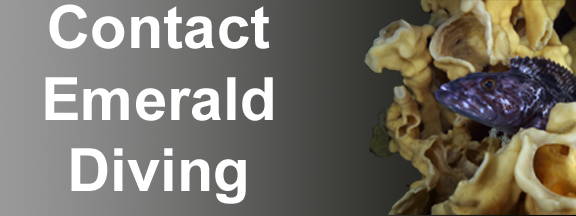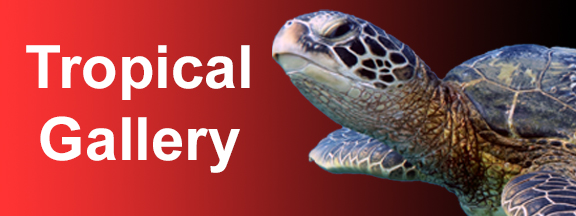

The enlargement viewer only works properly once ALL images on this page are loaded.
Blacktail Shrimp
Crangon nicricauda
Typical size: 1-2” length
ID: Single median carapace. Tail is generally, but not always black .
Comments: The blacktail shrimp is a very common inhabitant of kelp beds throughout Puget Sound. I always note this active species on night dives, typically at shallow depths where the broadleaf kelp grows thick.
Crangon nicricauda
Typical size: 1-2” length
ID: Single median carapace. Tail is generally, but not always black .
Comments: The blacktail shrimp is a very common inhabitant of kelp beds throughout Puget Sound. I always note this active species on night dives, typically at shallow depths where the broadleaf kelp grows thick.
Candy Stripe Shrimp
Lebbeus grandimanus
Typical size: 1-3” length
ID: Translucent white body with distinctive red, yellow and blue vertical bands.
Comments: The striking candy stripe shrimp usually inhabits the base of crimson anemones, although it is pictured here on giant plumose anemones at Edmonds Underwater Park. I often note these shrimp when diving in the San Juan Islands or Cape Flattery area. Note the female in this picture is laden with eggs.
Lebbeus grandimanus
Typical size: 1-3” length
ID: Translucent white body with distinctive red, yellow and blue vertical bands.
Comments: The striking candy stripe shrimp usually inhabits the base of crimson anemones, although it is pictured here on giant plumose anemones at Edmonds Underwater Park. I often note these shrimp when diving in the San Juan Islands or Cape Flattery area. Note the female in this picture is laden with eggs.
Deep Blade Shrimp
Spirontocaris prionota
Typical size: 1” length
ID: Deeply serrated carapace. Large blade on rostrum. Color varies greatly.
Comments: I don't often note this tiny shimp, mostly due to its minute size and ability to blend in with its surrounding. This photo was taken at Three Tree Point.
Spirontocaris prionota
Typical size: 1” length
ID: Deeply serrated carapace. Large blade on rostrum. Color varies greatly.
Comments: I don't often note this tiny shimp, mostly due to its minute size and ability to blend in with its surrounding. This photo was taken at Three Tree Point.
Dock Shrimp
Pandalus danae
Typical size: 2-4” length
ID: Very small blue dots on back. Black, ball like eyes. Shading can vary.
Comments: The dock shrimp seems to be ever-present. I can't remember the last dive I did where dock shrimp weren't present. Legions of these shrimp occupy the holes in the clay walls around Point Defiance.
Pandalus danae
Typical size: 2-4” length
ID: Very small blue dots on back. Black, ball like eyes. Shading can vary.
Comments: The dock shrimp seems to be ever-present. I can't remember the last dive I did where dock shrimp weren't present. Legions of these shrimp occupy the holes in the clay walls around Point Defiance.
Horned Shrimp
Paracragnon echinata
Typical size: 1-2” length
ID: Spikes over entire body with horn-like rostrum. Tan to brown in color.
Comments: This is one of those shrimp that you really have to look for to find. They are extremely well camoflaged and small. I usually do not note the horned shrimp until it moves. I have had the most success finding this species on soft substrates below 80 fsw.
Paracragnon echinata
Typical size: 1-2” length
ID: Spikes over entire body with horn-like rostrum. Tan to brown in color.
Comments: This is one of those shrimp that you really have to look for to find. They are extremely well camoflaged and small. I usually do not note the horned shrimp until it moves. I have had the most success finding this species on soft substrates below 80 fsw.
Spot Shrimp
Pandalus platyceros
Typical size: 6-8” length
ID: Very large size. Four distinctive white spots on back.
Comments: The highly prized spot shrimp is often targeted by shrimp fishermen and divers when the shrimping season is open. I only note these shrimp on soft substrates on night dives, and usually very deep (over 100 fsw). These shrimp can actually be inquisitive and will often come over and check me out if I am patient and make no sudden movements.
Pandalus platyceros
Typical size: 6-8” length
ID: Very large size. Four distinctive white spots on back.
Comments: The highly prized spot shrimp is often targeted by shrimp fishermen and divers when the shrimping season is open. I only note these shrimp on soft substrates on night dives, and usually very deep (over 100 fsw). These shrimp can actually be inquisitive and will often come over and check me out if I am patient and make no sudden movements.
Miniature Spinyhead
Mesocrangon munitella
Typical size: >1” length
ID: Typically noted with white carapace. Color and markings can vary.
Comments: I rarely note this little shrimp, mostly because of its small size and inconspicuous appearance. I have only noted this shrimp around structure on soft substrates.
Mesocrangon munitella
Typical size: >1” length
ID: Typically noted with white carapace. Color and markings can vary.
Comments: I rarely note this little shrimp, mostly because of its small size and inconspicuous appearance. I have only noted this shrimp around structure on soft substrates.
Squat Lobster
Munida quadrispina
Typical size: 2-5” length
ID: Long, narrow pinchers, stubby tail, red horizontal striping across back.
Comments: The comical looking squat lobstar is actually a shrimp. I readily note this species throughout Hood Canal. I have also noted squat lobsters at Possession Point Fingers and Gedney Bar.
Munida quadrispina
Typical size: 2-5” length
ID: Long, narrow pinchers, stubby tail, red horizontal striping across back.
Comments: The comical looking squat lobstar is actually a shrimp. I readily note this species throughout Hood Canal. I have also noted squat lobsters at Possession Point Fingers and Gedney Bar.
Stiletto Shrimp
Hyptacarpus stylus
Typical size: 1-2” length
ID: Tiny blue spots on body. Typically kelp colored, bright red, or green.
Comments: I often note this colorful shrimp on kelp and eel-grass at shallow depths. This species seems to take on the color of the nearby foliage to improve it camouflage.
Hyptacarpus stylus
Typical size: 1-2” length
ID: Tiny blue spots on body. Typically kelp colored, bright red, or green.
Comments: I often note this colorful shrimp on kelp and eel-grass at shallow depths. This species seems to take on the color of the nearby foliage to improve it camouflage.
Threespine Shrimp
Heptacarpus tridens
Typical size: 2” length
ID: Transparent body with red stripes and blotches. Prominent hump on back. Lack of white stripe on rostrum.
Comments: The threespine shrimp is often overlooked due ot its small size and the fact most of its body is transparent. When I purposely look for this species, I usually find ample numbers infesting invertebrate rich areas.
Heptacarpus tridens
Typical size: 2” length
ID: Transparent body with red stripes and blotches. Prominent hump on back. Lack of white stripe on rostrum.
Comments: The threespine shrimp is often overlooked due ot its small size and the fact most of its body is transparent. When I purposely look for this species, I usually find ample numbers infesting invertebrate rich areas.
Sparkling Shrimp
Pandalopsis lucidirmicola
Typical size: 2” length
ID: Orange to orange-brown strips with distinctive bright white spotting.
Comments: An absolutely striking species, these shrimp often hide deep in crevices - often hanging upside down. They tend to be very wary, so getting a good shot of the sparkling shrimp can be a challenge. Image taken at Sunrise Beach, Puget Sound.
Pandalopsis lucidirmicola
Typical size: 2” length
ID: Orange to orange-brown strips with distinctive bright white spotting.
Comments: An absolutely striking species, these shrimp often hide deep in crevices - often hanging upside down. They tend to be very wary, so getting a good shot of the sparkling shrimp can be a challenge. Image taken at Sunrise Beach, Puget Sound.
Roughpatch Shrimp
Pandalus stenolepis
Typical size: 3-4” length
ID: Almost translucent body with red markings. Heavily banded legs and antenna. Obvious blue spots on back.
Comments: I only have noted this species in Hood Canal. I am not certain how common this species is as it is very similar in appearance to the dock shrimp. Photo taken at Flagpole Point in Hood Canal.
Pandalus stenolepis
Typical size: 3-4” length
ID: Almost translucent body with red markings. Heavily banded legs and antenna. Obvious blue spots on back.
Comments: I only have noted this species in Hood Canal. I am not certain how common this species is as it is very similar in appearance to the dock shrimp. Photo taken at Flagpole Point in Hood Canal.
Alaskan Skeleton Shrimp
Caprella alaskana
Typical size: 1-2” length
ID: Slender segmented body. Preying mantis appearance. Color varies greatly.
Comments: This tiny shrimp is very abundant throughout Washington waters, although I usually find it in the top 50 feet of water. . It is often attached to kelp and has small hooks on some of its appendage that allow it to "stick" to neoprene. This photo was taken at Duncan Rock in the Cape Flattery area.
Caprella alaskana
Typical size: 1-2” length
ID: Slender segmented body. Preying mantis appearance. Color varies greatly.
Comments: This tiny shrimp is very abundant throughout Washington waters, although I usually find it in the top 50 feet of water. . It is often attached to kelp and has small hooks on some of its appendage that allow it to "stick" to neoprene. This photo was taken at Duncan Rock in the Cape Flattery area.
Stout Shrimp
Hyptacarpus brevirostris
Typical size: 1-2” length
ID: Very short rostrum that ends in a point. Coloration varies widely - from uniform to mottled greens, browns, and/or whites.
Comments: This is a very common inhabitant of the shallows in the Pacific Northwest . Photographed at Three Tree Point in Central Puget Sound.
Hyptacarpus brevirostris
Typical size: 1-2” length
ID: Very short rostrum that ends in a point. Coloration varies widely - from uniform to mottled greens, browns, and/or whites.
Comments: This is a very common inhabitant of the shallows in the Pacific Northwest . Photographed at Three Tree Point in Central Puget Sound.

Slender Shrimp
Heptacarpus tenuissimus
Typical size: 1.5” length
ID: Transparent, slender body with no spikes on rostrum and a continuous red line that extends the length of the body.
Comments: I rarely note this tiny shrimp - probably because it is mostly transparent. The slender shrimp is supposedly uncommon in Puget Sound. Finding the shimp is only half the battle as they rarely stay still for a photograph. I captured this one hanging upside down on a hydroid at Three Tree Point.
Heptacarpus tenuissimus
Typical size: 1.5” length
ID: Transparent, slender body with no spikes on rostrum and a continuous red line that extends the length of the body.
Comments: I rarely note this tiny shrimp - probably because it is mostly transparent. The slender shrimp is supposedly uncommon in Puget Sound. Finding the shimp is only half the battle as they rarely stay still for a photograph. I captured this one hanging upside down on a hydroid at Three Tree Point.
Kincaid's Shrimp
Heptacarpus kincaidi
Typical size: 1-2” length
ID: Distinctive while line on rostrum, prominent hump on back.
Comments: Also referred to as the broken-back shrimp due to it's prominent hump, this little shrimp is a comment inhabitant of crimson anemones. I often find three or four Kincaid's shrimp seeking refuge along the base of these colorful anemones. I rarely find Kincaid and candy stripe shrimp co-habitating. Photographed at Long Island West Wall in the San Juan Islands.
Heptacarpus kincaidi
Typical size: 1-2” length
ID: Distinctive while line on rostrum, prominent hump on back.
Comments: Also referred to as the broken-back shrimp due to it's prominent hump, this little shrimp is a comment inhabitant of crimson anemones. I often find three or four Kincaid's shrimp seeking refuge along the base of these colorful anemones. I rarely find Kincaid and candy stripe shrimp co-habitating. Photographed at Long Island West Wall in the San Juan Islands.

